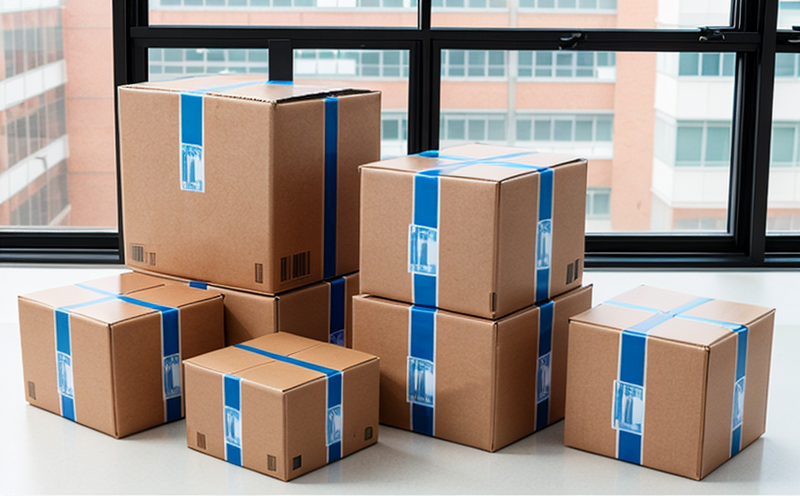JIS K7125 Water Vapor Transmission of Packaging Plastics Containing Nanoparticles
The JIS K7125 standard is a pivotal tool in evaluating the water vapor transmission (WVTR) properties of packaging plastics that incorporate nanoparticles. This test ensures that packaged goods maintain their quality and safety over time, especially under varying environmental conditions. Packaging materials with embedded nanoparticles are gaining traction due to their enhanced barrier properties against moisture, which can significantly extend shelf life.
The importance of WVTR testing in the context of nanomaterials cannot be overstated. Water vapor can degrade many products, from pharmaceuticals and foodstuffs to electronics, leading to issues like spoilage or performance degradation. By employing JIS K7125, manufacturers can verify that their packaging meets stringent quality standards, thereby ensuring product integrity.
The test process involves measuring the amount of water vapor that passes through a sample over time under controlled conditions. The standard specifies precise parameters such as temperature, humidity, and testing duration to ensure accurate results. This method allows for the quantification of moisture permeability in nanocomposites, which is critical for optimizing packaging design.
Nanoparticles used in these materials can include silica, alumina, or carbon-based nanoparticles that improve barrier properties by creating a more impermeable structure at the molecular level. The test helps to determine whether the addition of such nanoparticles enhances the overall performance of the packaging material.
Understanding the WVTR characteristics is crucial for several industries. For instance, in the food industry, it ensures that packaged goods remain fresh and safe from contamination. In pharmaceuticals, it guarantees that medicines retain their efficacy over extended storage periods. Additionally, in electronics manufacturing, it prevents moisture-induced damage to delicate components.
The precision of JIS K7125 testing is enhanced by state-of-the-art equipment capable of accurately measuring water vapor transmission rates. This capability allows for the identification of optimal packaging solutions that balance cost-effectiveness with performance requirements. The test results are typically reported in units like grams per square meter per day (g/m²·day), providing a clear quantification of the material's barrier properties.
Our laboratory adheres strictly to JIS K7125 guidelines, ensuring reliable and accurate testing outcomes. By using this standard, we provide clients with comprehensive insights into their packaging materials' performance, enabling them to make informed decisions regarding product development and quality assurance.
Scope and Methodology
| Test Parameters | Description |
|---|---|
| Temperature | Standard conditions typically set at 40°C ± 1°C |
| Relative Humidity | Conditions controlled between 65% and 75% |
| Testing Duration | 28 days under constant conditions |
| Moisture Barrier Evaluation | Determination of water vapor transmission rates through the packaging material |
The JIS K7125 standard involves subjecting samples to controlled environmental conditions over a specified period. This ensures that any changes in moisture content can be attributed solely to the barrier properties of the material, excluding external factors.
Our laboratory employs advanced equipment and methodologies to adhere strictly to these parameters, ensuring accurate and reliable results. We use precise instruments capable of measuring minute quantities of water vapor, which is crucial for detecting even slight variations in WVTR performance.
Benefits
Demonstrates compliance with international standards
Ensures product quality and safety over extended storage periods
Facilitates optimization of packaging design for better performance
Safeguards against degradation due to moisture, enhancing product integrity
Provides clear quantification of barrier properties, aiding in decision-making processes
Supports regulatory compliance and market entry requirements
Ensures consistent quality across different production batches
Facilitates the development of innovative packaging solutions with enhanced performance characteristics
The benefits extend beyond immediate product protection to long-term sustainability by reducing waste and optimizing resource utilization.
Why Choose This Test
Selecting JIS K7125 for water vapor transmission testing offers several advantages. Firstly, it provides a standardized approach that is internationally recognized, ensuring consistency across different laboratories. Secondly, the test results are crucial for quality assurance and compliance with industry regulations.
The test helps in identifying the optimal balance between cost-effectiveness and performance. By accurately measuring WVTR, manufacturers can refine their packaging solutions to meet both economic and functional requirements. Additionally, it aids in the development of innovative materials that enhance product protection without compromising on sustainability.
Our laboratory's expertise in this area ensures accurate testing results, which are vital for making informed decisions about material selection and process optimization. Clients benefit from a comprehensive understanding of their packaging performance, enabling them to innovate and stay competitive in the market.





